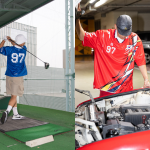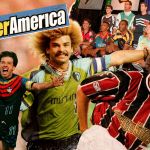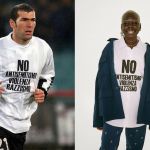
The "oratory" aesthetic
From goleadors to fake jerseys: FIFA Street before it was mainstream
March 15th, 2021
Bell towers, parish priests, brushed-out pitches and Estathé as a third half were a trait of the football life of many sportsmen, who united generations, amateurs, and champions. Paolo Maldini, for example, told journalists from all over the world several times that his childhood "lived it at the oratory" (his, in Milan, was that of Piazza Pio X). Even Francesco Totti, without specifying, did not hide his beginning as enfant prodige in the sports spaces of roman churches.
The matches at the oratory were a must of everyone's childhood, but today, like many things, they are also what is no longer there. They are lacking because the coronavirus is also fought with isolation and distances, the most antithetical principles to the values of the oratory camps. It is not only that certain dynamics are lost - friendships are created, physical activity is practiced in the open air, parents know where to track down their children - but in addition to the social problem, there is a matter of life: there are moments and customs that only at the oratory (or in a few other sporting mice in the world) can be lived.
The Set Place
Everyone had their own oratory, and it is clear that the urban planning of the neighborhood has altered our perception of sport - at the oratory it was not only played football, but also basketball, handball, someone also tennis. Those who lived in the center attended smaller camps, wedged between houses and palaces. In practice, the shore rule a lot more avaied. While those who were at home further away, towards the outskirts, then they could have more square meters and, if lucky, even more fields. The sight of windows and pitches could cause some tension for the hypothetical presence of the public.
The quality of the playing field is just as important to consider. Playing on the asphalt or on the surface of the five-a-side football area was far less enjoyable than the herb (even synthetic, spelacchiata, consumed). So, based on that, local generations of tough full-backs and strikers have grown up with the unscathable balance.
The outfits
A fundamental point of the aesthetics of the oratory and that allows to recognize who are in the street the children just out of a match are the jerseys. As children you don't have the perception that it can have an hype jersey (such as, for example, Nigeria's one): you see a lot of mainstream jerseys. CR7 of Juventus, Messi of Barca, Ibra of MILAN, someone had Materazzi of Inter and the inevitable Totti of Roma. Then you evolve and, over time, you begin to understand that it is good to affirm your style with a little selection. You grow inside showing the new jerseys out. Thus, at the age of 13-14, they began to see themselves as original uniforms as a jersey of Siena, one of Torino, of Sampdoria.
You don't judge anyone by the socks. Or rather, those who have it are understood to protect against uneven flooring. But generally you meet more ghosts and normal socks, on the other hand, everyone knows that there are no coaches or referees to correct the outfit of the player. Only, as on FIFA Street, someone chooses to play with the sweatshirt even in June - but usually, they are not from any team.
On the other hand, it is not necessary to be the most beautiful at the oratory court as to arrive earlier to get to the field, be ready for 2-3-4 hours of matches and challenge cycles of peers and not. The important thing, when you're little, is to be there. The only thing you can't do now.


































